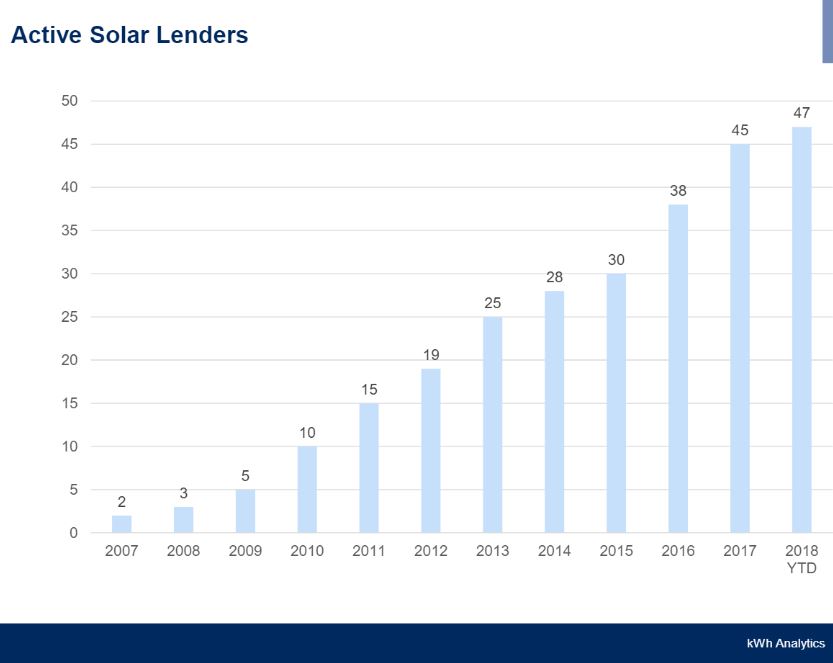For virtually everyone who cares about climate change, the election of Donald Trump precipitates an unprecedented crisis. The Paris climate agreement, an extraordinary commitment to global cooperation by more than 200 countries to dramatically curb carbon emissions, is now in grave danger. The Clean Power Plan is almost certainly dead. Our domestic politics are failing us, the world, and future generations yet unborn.
There has been much commentary in the last week that despite the shift in political winds, that solar remains a bright spot (see: “Trump Can’t Stop the Energy Revolution” and “Trump Can’t Stop The Clean Economy”). These articles cite the industry’s commonly accepted wisdom about the inevitability of continued cost reductions. While I fervently hope these optimistic voices prove correct, it would be a dangerous mistake to assume that cost reductions are inevitable simply by extrapolating historical trends.
If the global solar industry could agree on any one thing, it would be Swanson’s Law: the cost of the photovoltaic cells needed to generate solar power falls by 20% with each doubling of global manufacturing capacity. Manufacturing capacity grows to match demand for solar. As a result, continued cost reductions are dependent on global solar demand continuing to grow. So an examination of the top 3 global solar markets that account for 70% of global demand—China, Japan, and the US—provides insight into the ability of the industry to continue to reduce costs.
Last week, China slashed its 2020 solar target by 20%, cutting 40 GW from the expected global market over the next four years. Japan continues to cut its national feed-in tariff. As a result, last week, Orix, a major Japanese financial institution with 1.5GW of solar assets, announced that they are ceasing new investments in solar to focus on other categories. And in the U.S., we all know the challenges that our industry titans are facing. SunEdison is gone. SolarCity is looking to shoreup its balance sheet through a merger with Tesla. The U.S. market, even without president-elect Trump, was faced with the prospect of flat growth, compared to the double-digit annual growth rates the industry has grown accustomed to.
Due to these significant headwinds, it should be no surprise that Greentech Media estimates that global solar demand will actually shrink in 2017, for the first time in the industry’s history–and by a full 10%. If we truly believe in Swanson’s Law, we can no longer blithely assume that cost reductions are inevitable. We must acknowledge our vulnerability. The Solar Revolution has been stopped before: just look at what happened in the 1980s.
The question we must answer as an industry is how do we generate continued cost reductions despite a zero- or negative-growth environment? There are no easy answers.
There is very little left to squeeze out of module costs in the near term. Gross margins for module manufacturers have been compressing and will likely approach zero-margin territory like they did in 2012. Historically, module manufacturers’ profit margins have been the industry’s most reliable target for “cost reductions,” but we are rapidly exhausting this cushion.
So where can solar companies drive down cost? The answer lies in solutions addressing the ubiquitous “soft costs” that now account for the lion’s share of total solar project costs. Firms like mine must redouble our efforts to scale our solutions. Whether our collective efforts are to help through new insurance products, smarter risk management, more efficient O&M, improved system designs, innovative sales strategies, or streamlined installation processes, we all need to double down, now. Improving the business of solar needs to become the primary business of our industry.
Unlike my software engineer colleagues, I studied international relations in college. One of my favorite political thinkers, Alexis de Tocqueville, made an observation about the American national character in the early 1800s that still resonates today. He noted that in times of adversity, Americans look to their communities to jointly create their own solutions, rather than looking for a solution handed down from their government. In Trump’s America, we who care about climate change are now forced to look to each other for our solutions—we cannot expect any answers from this government.
No one should expect the next few years to be easy. But I’m optimistic that by working together, we will come through on the other side of this uncertainty stronger than before. We have to work harder and smarter to drive down costs, even when Swanson’s Law is (temporarily) not working for us. That is what I’m committing to and I hope you will join me. Let’s get back to work. We have a planet to save.
By Richard Matsui; November 17th, 2016
Richard Matsui is the CEO and co-founder of kWh Analytics, a risk management data platform for solar energy assets. For his work at kWh, Richard was named one of the Forbes “30 Under 30” for energy. Richard has more than 10 years of experience in solar, including as a founding member of McKinsey & Company’s solar practice in their Greater China office where he was the firm’s leading expert on the global PV industry.




